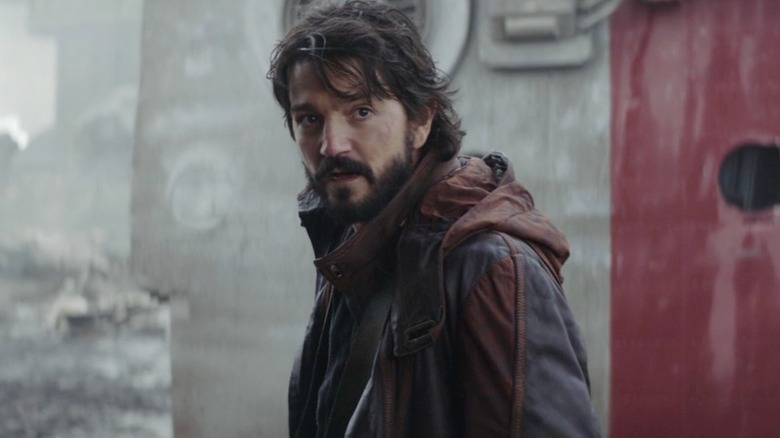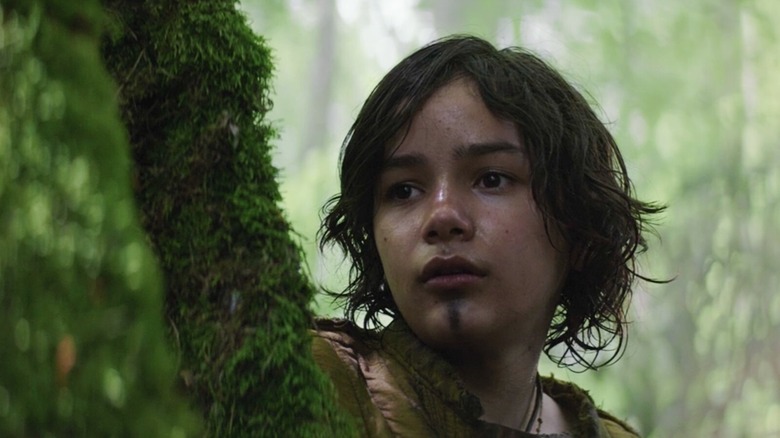Andor's Revelations Suggest The Republic Was Rotting Long Before Return Of The Sith
Perhaps the most evil and iconic organization in all of science fiction, the Galactic Empire of the "Star Wars" universe is no stranger to atrocity. Led by agents of darkness like the militaristic Grand Moff Tarkin, the brutal Sith Lord Darth Vader, and their cruel puppet master Emperor Palpatine, the arms of the Empire are a force of sheer might, driven only by a lust for power and conquest. According to Lucas, the Empire was inspired by both the Colonial British Empire and the "American Empire" during the Vietnam War (via AMC). In the second and third prequel films, Lucas presented the Empire's rise to power as at least a partial allegory for the Bush-era American political landscape, which — as CBS reports — saw democracy failing in favor of warmongering disguised as the promise of peace.
This fictional fascist government made its debut in 1977's "Star Wars" (later retitled "A New Hope"), wherein they used the planet-killing weapon, the Death Star, to destroy Alderaan — the home planet of Carrie Fisher's beloved heroine, Princess Leia. Though it's been nearly forty years since it was supposedly brought down for good, the Galactic Empire — their ideology, their methods, and even their leaders — keep coming back. Indeed, even Disney+'s most recent journey to the galaxy far, far away, "Andor," is haunted by the specter of the Empire — revealing new horrors about their deadly galactic reign.
A vengeful Republic
Dropping its first three episodes all at once, "Andor" has finally begun to arrive on Disney+. Over the course of the next nine weeks, viewers will presumably understand how Cassian Andor (Diego Luna) — the morally complex hero of 2016's "Rogue One" — became a card-carrying member of the Rebellion. His fate is already sealed, of course, along with Felicity Jones' Jyn Erso, on the beaches of Scarif. Yet while his future is well known, his past has remained a mystery up until this point.
The first three episodes of "Andor" rely heavily on flashbacks to reveal Cassian's early years on the planet of Kenari. As these episodes explain, it seems that Cassian is taken from his home world at a young age after a scavenger takes pity on him. The people of Kenari killed a Republic Officer after their vessel crash landed on the isolated planet — and as a result, the scavenger is sure the Republic will raze the planet in retaliation.
That's no mining accident...
The fact that these are the actions of a late-stage Galactic Republic, though — rather than an early Galactic Empire — is extremely telling, and says a lot about the story "Andor" is telling.
This narrative choice shows that toward the end of the Clone Wars, the Republic military had already been morally corrupted by years unending conflict. This follows in the footsteps of Dave Filoni's "Clone Wars" series, which sought to depict a less binary "good and evil" galactic make-up, focusing on the shades of grey at the heart of the war (via Wired). In both Filoni's series and "Andor," it seems as though Palpatine's corruption of the government and military went beyond merely executing Order 66: the virtuous Republic of old was long gone by the time he took complete control.
As pointed out by Thomas Bacon of Screen Rant, Kenari had been officially recorded as the victim of a "mining disaster," per the Empire's official records. Suspiciously, the same was officially stated of Jedha, the planet the Empire used as an early target for their Death Star. As such, it can be inferred that a "mining disaster" is ultimately just a term used to conceal criminal or otherwise embarrassing acts that could foment rage, sympathy, and mistrust in the Empire throughout the galaxy. It is unknown what exactly the "mining disaster" refers to, or if it was technically committed before or after the Republic formally became the Empire. It's likely this will be addressed in upcoming episodes of the Disney+ series "Andor."


